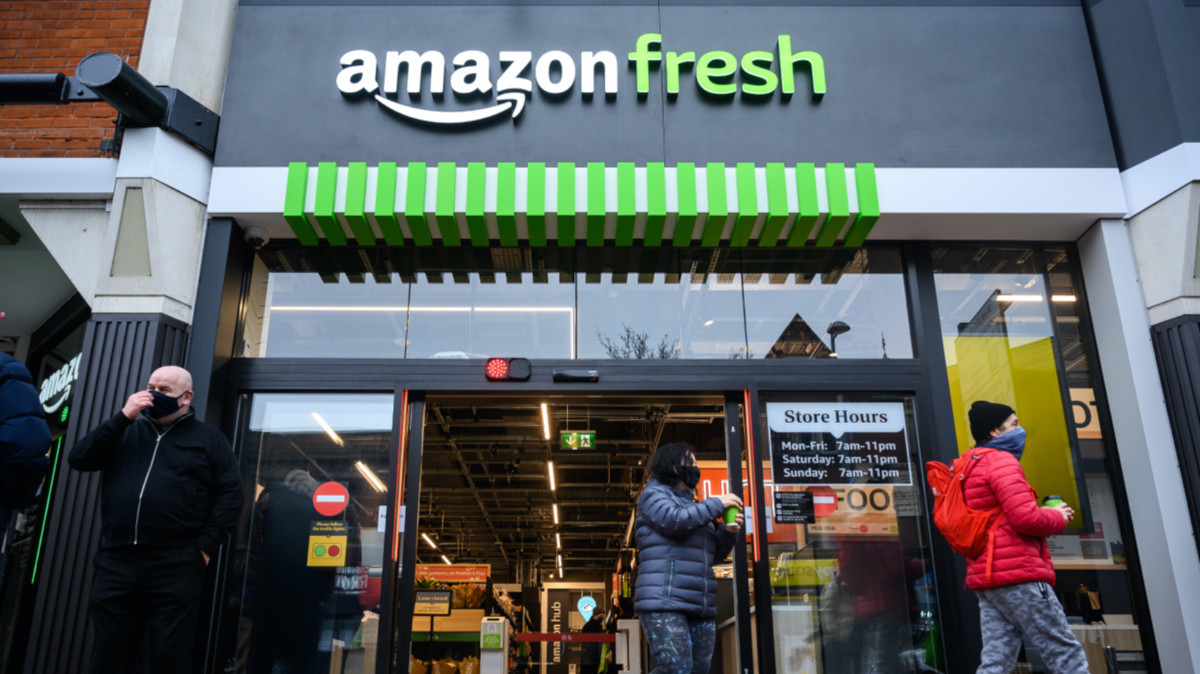MoneyTalks: Which ASX retail stocks are safe from Amazon and which ones are vulnerable?

Amazon is continuing to grow whether ASX stocks like it or not (Pic: Getty)
MoneyTalks is Stockhead’s regular recap of the ASX stocks and sectors that fund managers and analysts are looking at right now, and in this edition we’re looking at stocks potentially affected by Amazon.
Today we hear from Johannes Faul, director of equity research at Morningstar.
Last month ASX retailers had a shiver sent down their spines with news that Amazon Australia surpassed $1 billion in a calendar year for the first time ever.
And Morningstar reckons it will triple its local footprint in 2021 and by 2030 will account for 25 per cent of Australian online retail sales and 5 per cent of the total retail market.
But Faul says the consumer electronics category is the most vulnerable to Amazon disruption, being Amazon’s biggest category.
“If you look at which categories are the most penetrated in terms of percentage of total market size in that category, it’s consumer electronics globally that’s leading the way and it’s the same in Australia,” he told Stockhead.
“If you think of [Amazon’s] GMV (everything transacted annually), about a third of that is consumer electronics. It’s their biggest category by far.”
JB HIFI (ASX:JBH) and HARVEY NORMAN (ASX:HVN)
Morningstar has rated these two retailers as particularly vulnerable and overvalued.
JB Hi-Fi currently trades over $50 and Harvey Norman at $6 but Morningstar thinks the fair values are $30 and $3.60 respectively. It also thinks Amazon’s GMV grew three times more than both company’s Australian sales in 2020.
Faul thinks while both companies have benefited from a boom in spending triggered by the quick move to working from home, it won’t be the same this year and both still have high exposure to brick and mortar
“JB Hi-Fi has roughly 40 per cent of sales online, it’s a fair chunk but high exposure to brick and mortar which is not growing at the same place.
“Right now, yes, but post-pandemic it’s going to slow again and be a real drag on JB Hi-Fi and Harvey Norman’s performance.
“We believe both those retailers are overvalued and what’s been driving it is a growth spurt we’ve seen in the pandemic with a lot of working from home, people setting themselves up to work from home.
“But in reality that’s unsustainable and it’s a fleeting trend.”
JB Hi-Fi (ASX:JBH) and Harvey Norman (ASX:HVN) share price chart
KOGAN (ASX:KGN)
While Kogan is also rated as trading above its fair value, it is higher rated than JB Hi-Fi or Harvey Norman.
Faul personally thinks Kogan, being a pure online player, will do better against Amazon than other ASX stocks.
“Because the online channel for consumer electronics is growing at a much greater rate than brick and mortar,” he explained
“So we see in store sales at Harvey Norman and JB Hi-Fi in the low single digits while online channel will grow in high single digits over next decade.
“This current calendar year we will see strong growth especially in the first half and that is the channel that’s growing sales strongly.
“Kogan has 100 per cent exposure to that channel, they don’t have a brick and mortar holding them back, all their sales are exposed to the online channel.
“JB Hi-Fi had great online sales in 2020 calendar year; it grew online sales by 130 per cent – fantastic, it’s huge.
“Kogan grew by 80 per cent, Amazon on our estimates only grew by 60 per cent. But then if you add in brick and mortar sales growth which was much lower for JB Hi-Fi, all up sales only increased by 20 per cent vs Kogan at 80 per cent and Amazon at 60 per cent plus.
“So we can see even in this strong year of growth that JB Hi-Fi in terms of overall growth has underperformed the other players and we see that playing out going forward.”
Kogan (ASX:KGN) share price chart
COLES (ASX:COL) and WOOLWORTHS (ASX:WOW)
On the other hand groceries are less vulnerable to Amazon, particularly supermarket giants and ASX-listed Coles and Woolworths.
While Amazon isn’t a stranger to the grocery category, it has made its biggest inroads through acquisitions – particularly its purchase of Whole Foods.
Raul thinks for Amazon to enter the grocery segment they’ll need to set up multiple segments for different categories and this would be a big ask.
“It’s more difficult to transact or to set up an infrastructure for online grocery fulfillment and the reason being you need frozen, refrigerated and [room] temperate [products],” Faul said.
“So your warehouse fulfilment centre must have that or you need a store network – which Woolworths and Coles both have – from which they can service click and collect or they can pack delivery orders in store and then deliver from there.”
Faul noted Coles and Woolworths were going down different paths.
While Woolworths was automating stories and fulfilling online orders there, Coles (with its partnership with Ocado) is relying on technology-driven home delivery.
“Then you think about Amazon, you mentioned Whole Foods over in the US that Amazon bought which gave them a large physical stores presence in groceries and made it to help with furthering capabilities,” he said.
“We don’t have anything similar in Australia, we just see for Amazon to really become a threat for the supermarkets they’ll have to get into fresh and all those other things like dairy, meat and frozen. To do so it’s going to complicate their infrastructure, so in our mind that’s way off for the Australian market.”
Coles (ASX:COL) and Woolworths (ASX:WOW) share price chart
The views, information, or opinions expressed in the interviews in this article are solely those of the interviewees and do not represent the views of Stockhead.
Stockhead does not provide, endorse or otherwise assume responsibility for any financial product advice contained in this article.
Related Topics
UNLOCK INSIGHTS
Discover the untold stories of emerging ASX stocks.
Daily news and expert analysis, it's free to subscribe.
By proceeding, you confirm you understand that we handle personal information in accordance with our Privacy Policy.








